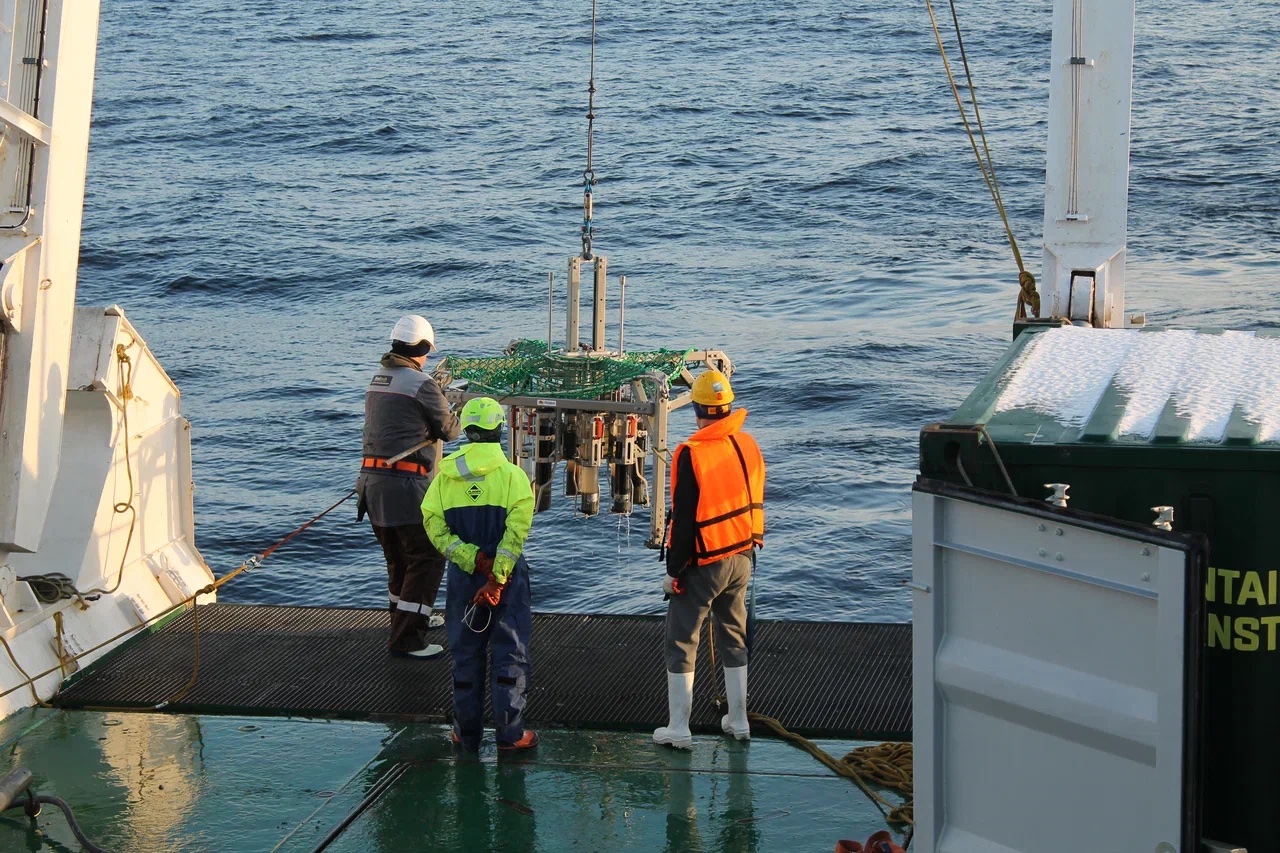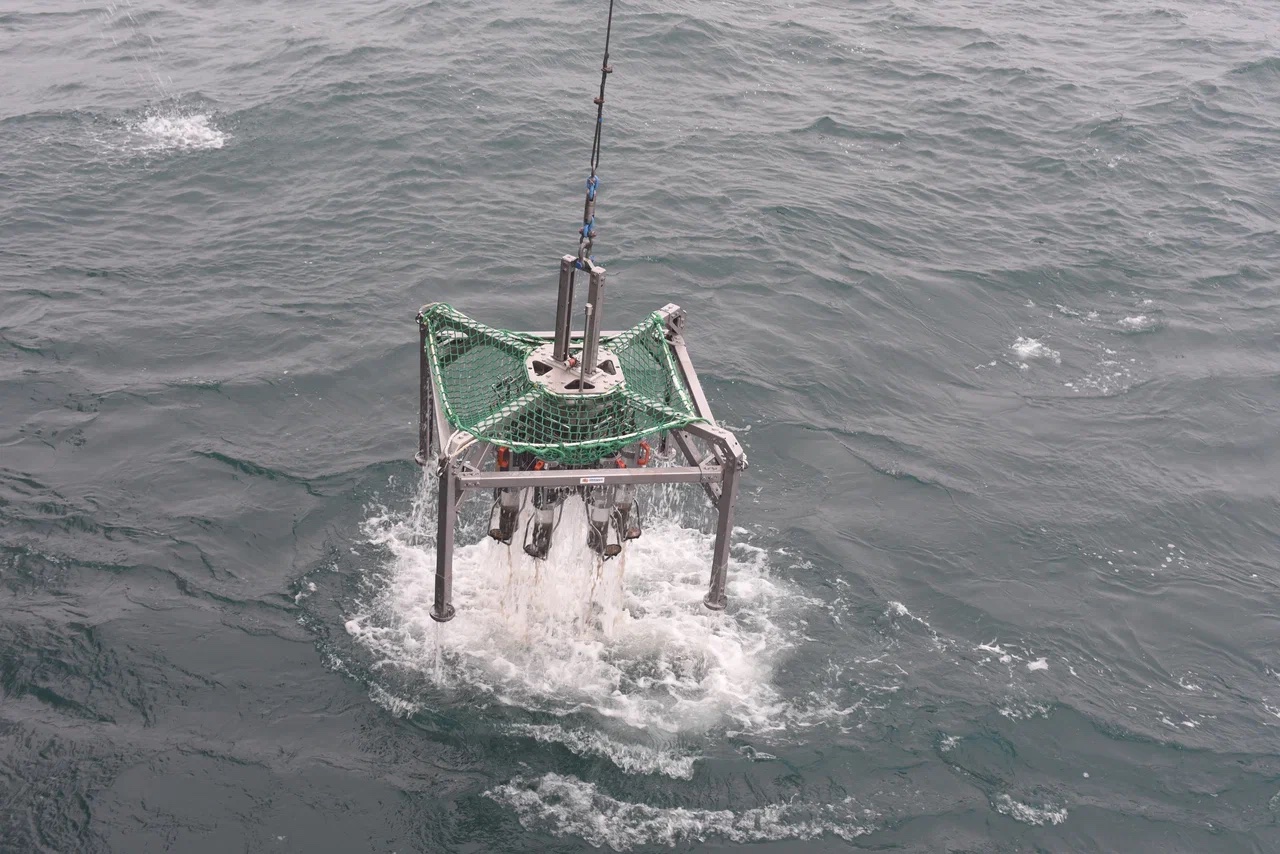A research team from the Petroleum Center at Skoltech and other institutions continues a series of studies exploring bottom sediments and subsea permafrost in the Arctic. The new paper, published in the Marine and Petroleum Geology journal, compiles data from expeditions and introduces new results of bottom sediment studies in the Arctic seas (the Kara Sea, Laptev Sea, and East Siberian Sea) focusing on their temperature characteristics and reasons behind their formation. Researchers contribute to the Arctic exploration and provide insights into the global warming challenges.
The Earth’s climate keeps changing, which is escalated not only by human activity and carbon dioxide emission, but also by methane entering the atmosphere in large proportions. Cattle breeding is considered its key source, but it also increasingly comes from wetland ecosystems and results from the natural degasation of the Earth. The greenhouse effect of methane is much higher than that of carbon dioxide. According to the Intergovernmental Panel on Climate Change established for evaluating the influence of human activity on global warming, within 100 years the share of methane in global climate change is expected to be 28 times higher compared with carbon dioxide.
The Arctic region is extensively developed by many countries. As authors argue, more than 80% of its subsea permafrost belong to the Russian Arctic seas — the Laptev Sea, East Siberian Sea, and Chukchi Sea. Subsea permafrost is considered to contain much methane. As a result, when it degrades, methane is released from permafrost to the water column above it and then to the atmosphere. Among its sources are gas hydrates (compounds of water and low-molecular gases forming at a certain temperature and pressure), gas accumulations in the permafrost, and deep-seated gas flows entering through areas of increased permeability and faults. When temperature is rising, gas hydrates start decomposing. It is estimated that decomposition of gas hydrates will produce much more methane than today’s level in the atmosphere.
“We would like to highlight research into bottom sediment temperatures, which is an indirect sign of subsea permafrost. It allows estimating whether the area under study has permafrost and revealing effects from other factors: river flows, undercurrents, decomposition of gas hydrates, and deep heat flows,” says Leading Research Scientist Evgeny Chuvilin from the Petroleum Center.
The authors concluded that bottom sediment temperature in the Arctic seas is discontinuous, especially in the Kara Sea — from +5°C in the west to −1.4°C in the east. High temperatures are due to warm currents from the Barents Sea and effects from large Siberian rivers Ob, Yenisei, and Lena. The distribution of bottom sediment temperatures was put on the map: “We presented not only a table with data, but also a map, where we put temperature and potential borders of the subsea permafrost,” continues Evgeny Chuvilin.

Image 2. Extraction of Bottom Multicorer Sampler With Bottom Water and Sediments. Credit: members of the AMK-82 Arctic expedition in 2020
The map of the bottom sediment temperature distribution correlates well with existing maps of subsea permafrost in the Russian Arctic shelf. The lowest bottom sediment temperatures in the Arctic shelf were registered in the Laptev Sea and East Siberian Sea, where, according to indirect evidence, subsea permafrost is as thick as 500-600 meters. Another critical result lies in actual thermophysical parameters of bottom sediments. They are necessary for forecast calculations — including those exploring how climate influences degradation of subsea permafrost.
“We reveal all our actual data and are open to discussions. If someone does not agree with our interpretations, they are welcome to process our data themselves. An approach like that is appreciated in the academic community,” argues the leading author of the study, Senior Research Scientist Boris Bukhanov from the Petroleum Center.
Now, researchers are planning to continue their work in the eastern part of the Arctic: “We aim to study the Laptev Sea. We would like to analyze the areas of active methane emission and how it is associated with temperatures. Also, we need more information about underwater gas hydrates — a huge source of methane,” concludes Evgeny Chuvilin.
Contact information:
Skoltech Communications
+7 (495) 280 14 81

